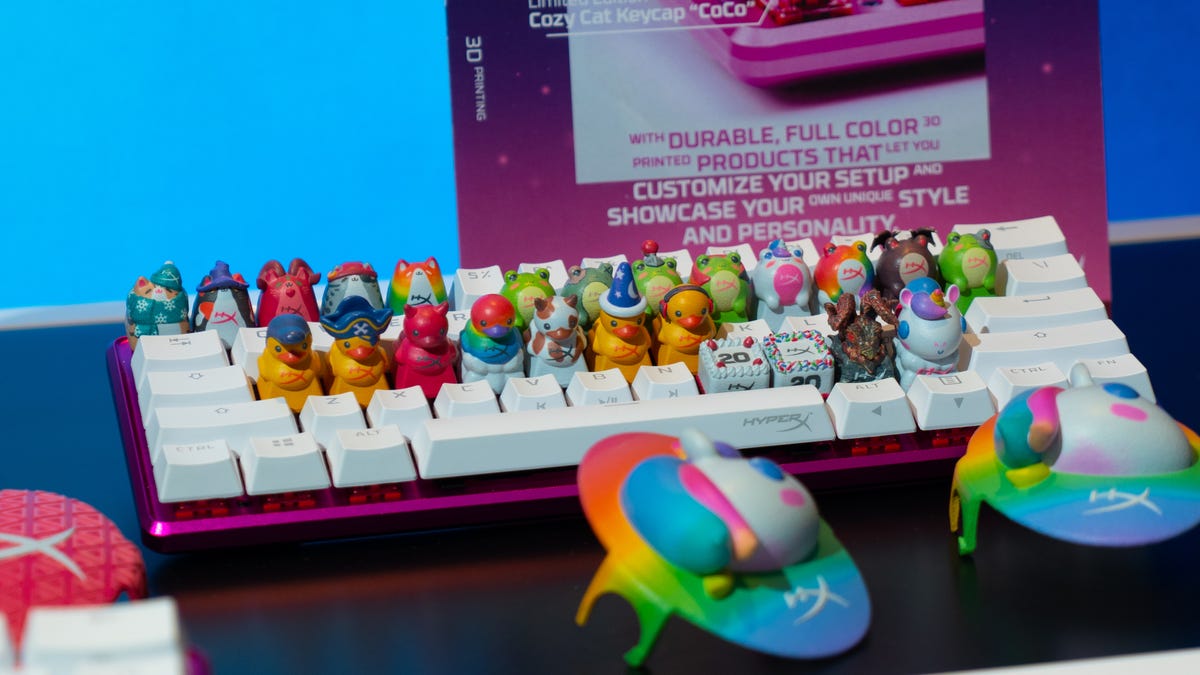HyperX, the gaming peripheral arm of HP, has announced a series of 3D-printed add-ons at CES to customize and personalize the brand’s keyboards, mice and headsets.
What makes this line interesting is that the keycaps and headphone stands are all produced on HP’s industrial color 3D printers. Using powdered nylon, they’re more advanced than the basic PLA plastic material used by most home 3D printers, but still nontoxic and environmentally friendly.
At a pre-CES preview event, I saw a wide variety of styles, some of which were cute and cozy — HP calls this design language “Cozy.” Others had a dark fantasy theme, with lots of skulls and horns. Some of them, like replacement WASD keys — important for gaming — are mostly visual. Others turn keys into towering sculptures and are probably best left for function keys you don’t normally use, as they’re almost impossible to type on.


I also got to see some gaming headsets and mic add-ons. HyperX headsets can be adorned with either cute animal ears or creepy demon horns, and HyperX’s RGB microphones, which have multicolored lighting effects, can sit in special stands like a cozy anthropomorphic mushroom or a skull-and-bones pedestal.
These will be released in limited-edition waves, like other collectible drops, and the first release is a Cozy Cat keycap, which will be available for $20 from HyperX in January. Additional designs in new limited-production releases are planned throughout the year, some in collaboration with game streamers and other celebrities.


















